Explore the properties of some common three-dimensional objects with this printable mini-book.
3D Shape Properties… Explained!
Let’s face it… primary-aged children LOVE little books! We’ve capitalised on this fact by creating an informative and age-appropriate mini-book to deepen your students’ knowledge and understanding of some common 3D objects and their properties. By engaging with this resource, students will learn about the following three-dimensional objects:
- Cube
- Cylinder
- Pyramid
- Sphere
- Cone
- Rectangular prism
- Triangular prism
For each object, students are required to:
- Read about the object’s properties.
- Draw the object.
- Record the number of faces, edges and vertices, or the number of flat and curved surfaces.
How to Create This 3D Shapes Mini-Book
This resource contains nine pages. Each page includes two mini-book pages (18 pages in total). To assemble the mini-book, follow these simple steps.
- Print out the resource. Create copies as required.
- Cut each page along the dotted line.
- Compile the pages in order.
- Staple the pages along the left-side margin to create a booklet.
- Distribute to the students.
A Note About Cones and Cylinders
Within this resource, you will notice the following properties are attributed to cones and cylinders:
- Cones – 1 flat surface, 1 curved surface
- Cylinders – 2 flat surfaces, 1 curved surface
In geometry, the following definitions apply to faces, edges and vertices:
- Face – A flat surface with straight edges.
- Edge – A straight line formed by two faces meeting.
- Vertex – The point where two or more edges meet.
According to these definitions, a cone has no faces, edges or vertices. It has one flat surface, one curved surface and one apex.
Similarly, according to these definitions, a cylinder has no faces, edges or vertices. It has two flat surfaces and one curved surface.
Should you wish to adapt these definitions, please download the editable Google Slides version of this resource.
Easily Prepare This Resource for Your Students
Use the dropdown icon on the Download button to choose between the easy-print PDF or the editable Google Slides version of this resource.
This resource was created by Jodi Chubb, a Teach Starter collaborator.
Click below for more great resources for teaching 3D objects to your students!

teaching resource
3D Object Profiles – Template
Draw, name and describe the features of 3D objects with this profiling template.
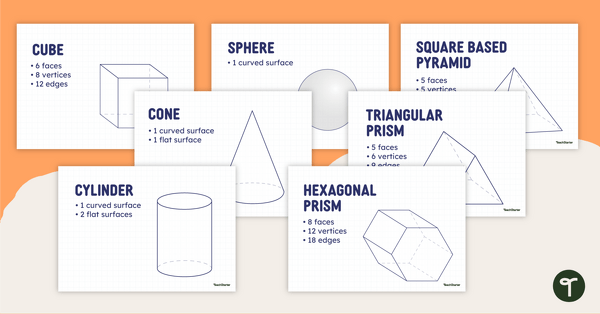
teaching resource
3D Objects Poster Pack
Learn the names and properties of some common 3D shapes with this set of classroom posters.

teaching resource
3D Object Cafe- Interactive Activity
Practise identifying 3D objects and their properties in multiple ways with this engaging interactive activity.
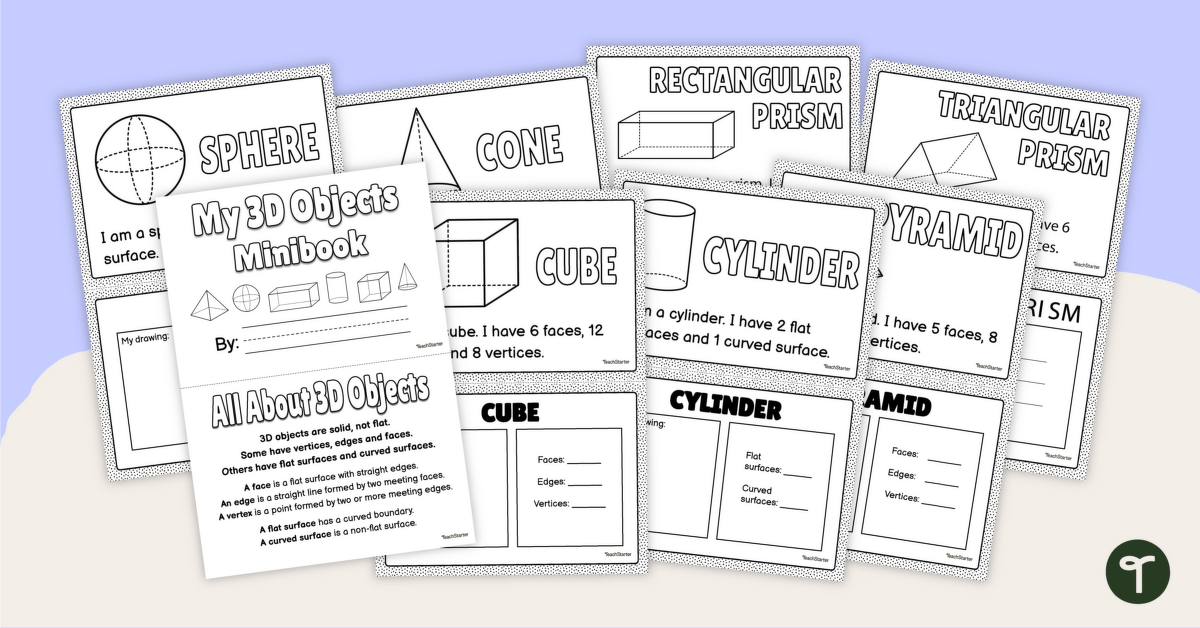


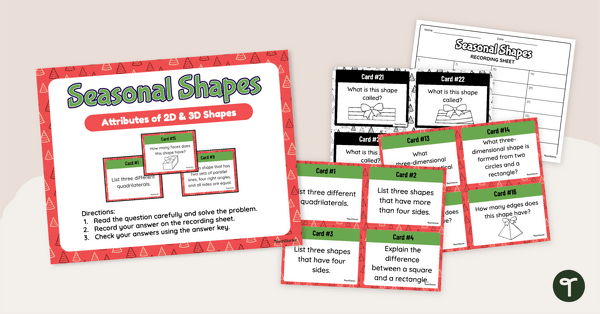
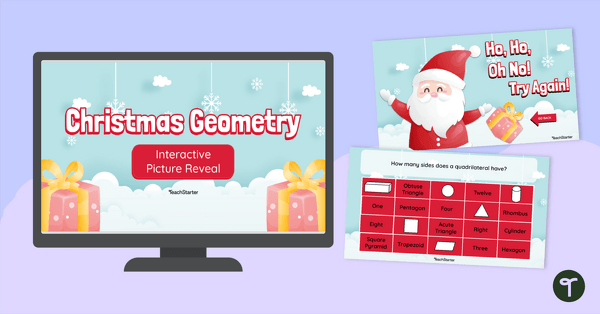


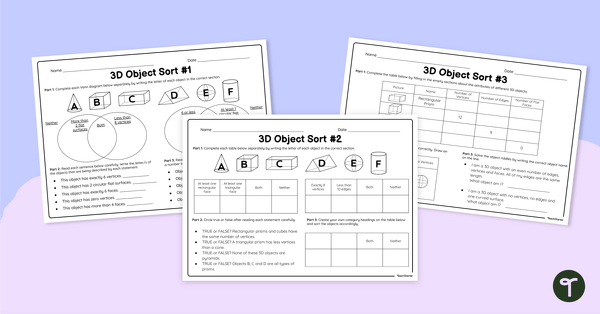
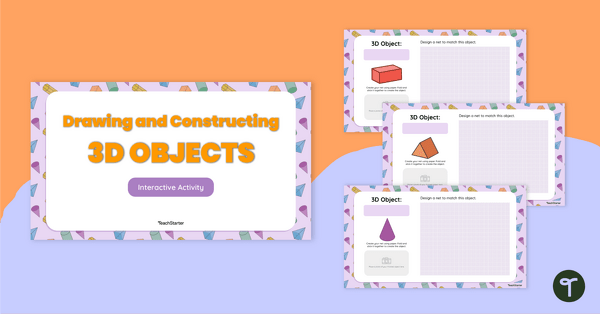
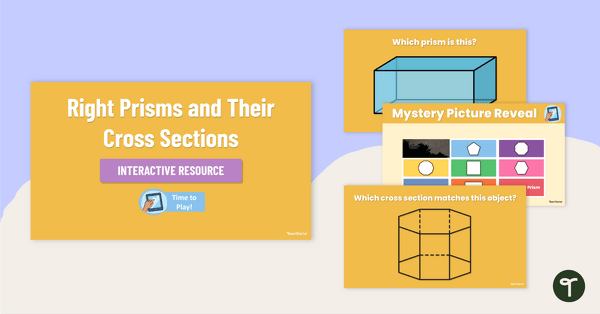
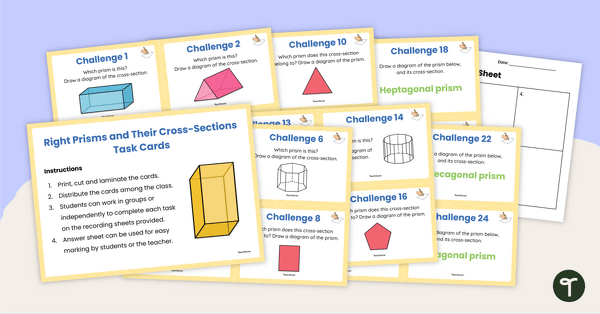
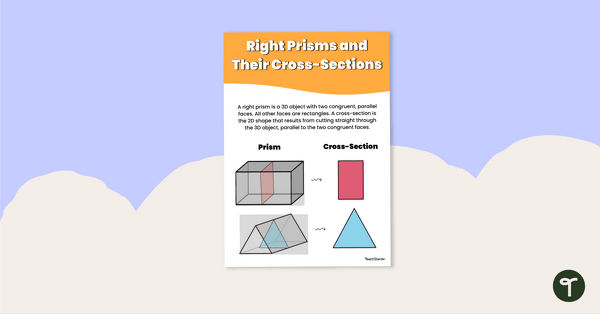
0 Comments
Write a review to help other teachers and parents like yourself. If you'd like to request a change to this resource, or report an error, select the corresponding tab above.